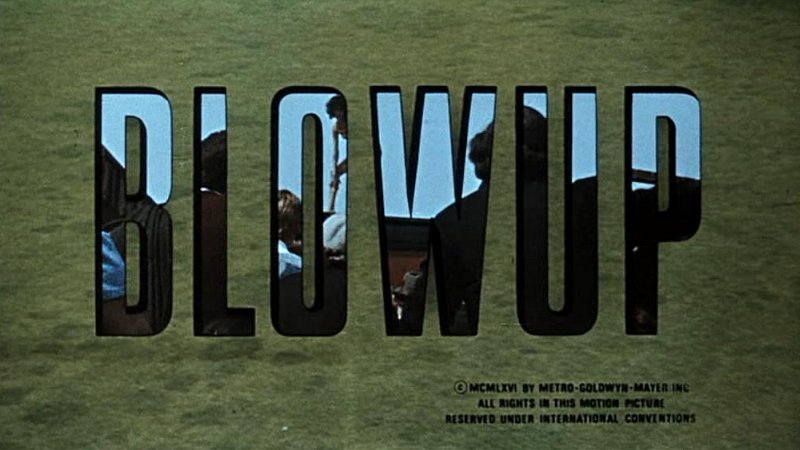
|
 Synopsis : Based on a short story by Julio Cortazar , the film concerns a photographer
(Hemmings) who may or may not have inadvertently preserved evidence of a murder, which may or
may not involve a woman (Redgrave) who visits the photographer in his studio .
As is typical with Antonioni films, the story does not follow a conventional narrative structure .
As a professional photographer, the main character mixes with the rich and famous in the
London of the sixties . One day he chances upon two lovers in a park and takes photos
of them . The woman of the couple pursues him, eventually finding his apartment and
desperately trying to get the film . This leads the photographer to investigate the film,
making blowups (enlargements) of the photos . This process seems to reveal a body,
but the director uses the heavy film grain and black and white imagery to obscure the image . This drives the photographer to keep making blowups and try to find the truth. He does eventually
find the body in the park, but this time, unfortunately and surprisingly, he is without his camera .
He tries to get a friend to act as witness, but later the body is gone .
Ultimately, the film is about reality and how we perceive it or think we perceive it .
This aspect is stressed by the
final scene ,
one of many famous scenes in the film, when the photographer watches a mimed tennis match and,
after a moment of amused hesitation, enters the mimes' own version of reality by picking up
the invisible ball and throwing it back to the two players .
A tight shot shows his continued watching of the match, and, suddenly, we even hear the ball
being played back and forth .
Another version of reality has been created . Then, at the very end, Hemmings,
standing all alone in the green grass of the park, suddenly disappears,
removed by his director , Antonioni .
Synopsis : Based on a short story by Julio Cortazar , the film concerns a photographer
(Hemmings) who may or may not have inadvertently preserved evidence of a murder, which may or
may not involve a woman (Redgrave) who visits the photographer in his studio .
As is typical with Antonioni films, the story does not follow a conventional narrative structure .
As a professional photographer, the main character mixes with the rich and famous in the
London of the sixties . One day he chances upon two lovers in a park and takes photos
of them . The woman of the couple pursues him, eventually finding his apartment and
desperately trying to get the film . This leads the photographer to investigate the film,
making blowups (enlargements) of the photos . This process seems to reveal a body,
but the director uses the heavy film grain and black and white imagery to obscure the image . This drives the photographer to keep making blowups and try to find the truth. He does eventually
find the body in the park, but this time, unfortunately and surprisingly, he is without his camera .
He tries to get a friend to act as witness, but later the body is gone .
Ultimately, the film is about reality and how we perceive it or think we perceive it .
This aspect is stressed by the
final scene ,
one of many famous scenes in the film, when the photographer watches a mimed tennis match and,
after a moment of amused hesitation, enters the mimes' own version of reality by picking up
the invisible ball and throwing it back to the two players .
A tight shot shows his continued watching of the match, and, suddenly, we even hear the ball
being played back and forth .
Another version of reality has been created . Then, at the very end, Hemmings,
standing all alone in the green grass of the park, suddenly disappears,
removed by his director , Antonioni .
 Basato su un racconto breve di Julio Cortazar , il film tratta di un fotografo ( Hemmings )
che potrebbe avere inavvertitamente raccolto prova di un omicidio, in cui potrebbe essere
coinvolta una donna ( Redgrave ) che visita il fotografo nel suo studio .
Come e' tipico nei film di Antonioni la storia non segue una struttura narrativa convenzionale .
Come fotografo professionista il protagonista si mischia con personaggi ricchi e famosi
nella Londra degli anni Sessanta .
Un giorno egli vede una coppia in un parco e scatta loro alcune foto .
La donna lo cerca, trovando finalmente il suo appartamento e cercando disperatamente di
ottenere da lui la pellicola .
Questo induce il photografo a studiare gli scatti, facendo degli ingrandimenti ( blowups )
delle foto . Questo processo sembra rivelare un corpo, ma la grana pesante della pellicola
in bianco e nero rende l'immagine oscura e poco nitida .
Il fotografo continua ad eseguire ingrandimenti alla ricerca della verita'.
Si reca poi nel parco e trova il corpo, ma questa volta, sfortunatamente e sorprendentemente,
ha dimenticato la macchina fotografica .
Cerca percio' di convincere un amico ad essere testimone, ma piu' tardi il corpo e' sparito .
Basato su un racconto breve di Julio Cortazar , il film tratta di un fotografo ( Hemmings )
che potrebbe avere inavvertitamente raccolto prova di un omicidio, in cui potrebbe essere
coinvolta una donna ( Redgrave ) che visita il fotografo nel suo studio .
Come e' tipico nei film di Antonioni la storia non segue una struttura narrativa convenzionale .
Come fotografo professionista il protagonista si mischia con personaggi ricchi e famosi
nella Londra degli anni Sessanta .
Un giorno egli vede una coppia in un parco e scatta loro alcune foto .
La donna lo cerca, trovando finalmente il suo appartamento e cercando disperatamente di
ottenere da lui la pellicola .
Questo induce il photografo a studiare gli scatti, facendo degli ingrandimenti ( blowups )
delle foto . Questo processo sembra rivelare un corpo, ma la grana pesante della pellicola
in bianco e nero rende l'immagine oscura e poco nitida .
Il fotografo continua ad eseguire ingrandimenti alla ricerca della verita'.
Si reca poi nel parco e trova il corpo, ma questa volta, sfortunatamente e sorprendentemente,
ha dimenticato la macchina fotografica .
Cerca percio' di convincere un amico ad essere testimone, ma piu' tardi il corpo e' sparito .
In definitiva il film tratta della realta e di come la percepiamo o pensiamo di percepirla .
Questo concetto e' evidente nella
scena finale ,
una delle scene piu' famose del film, quando il fotografo guarda un incontro di tennis mimato e,
dopo un momento di divertente esitazione, entra nella realta dei mimi che giocano raccogliendo
la palla invisibile e tirandola loro .
I due mimi continuano a giocare e, improvvisamente, anche noi sentiamo i colpi sulla palla che
viene tirata avanti e indietro .
Un'altra versione della realta' e' stata creata .
Poi, al vero finale, Hemmings, in piedi tutto il da solo nell'erba verde del parco,
sparisce improvvisamente, rimosso dal suo regista , Antonioni .
|
|
|
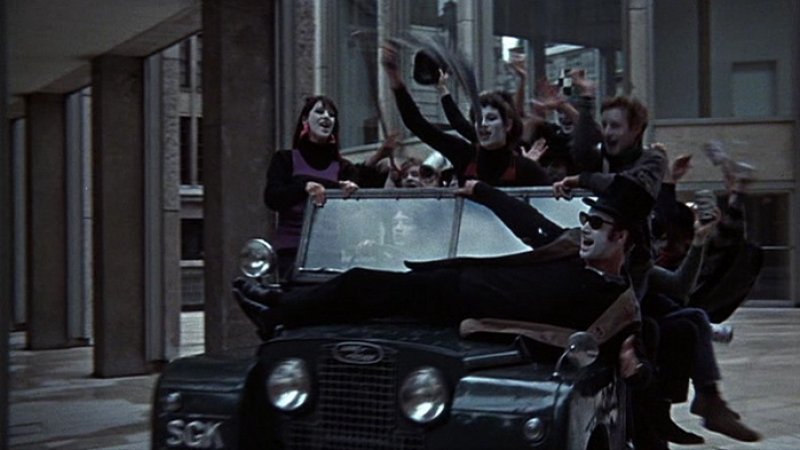 |
 |
|
Top model Verushka
|
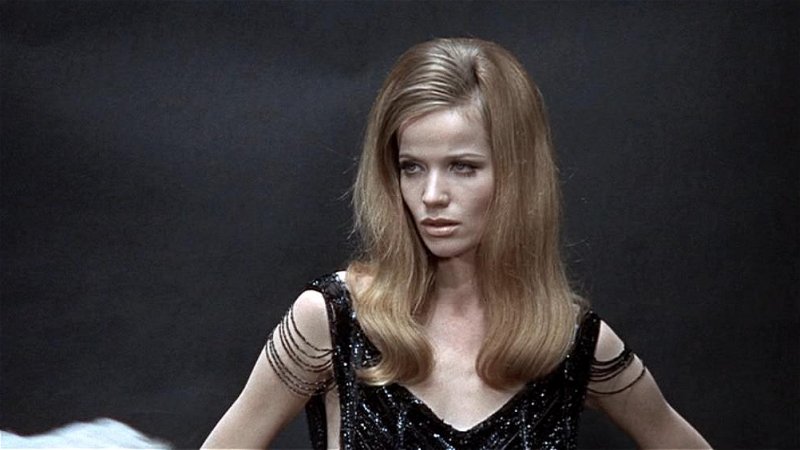 |
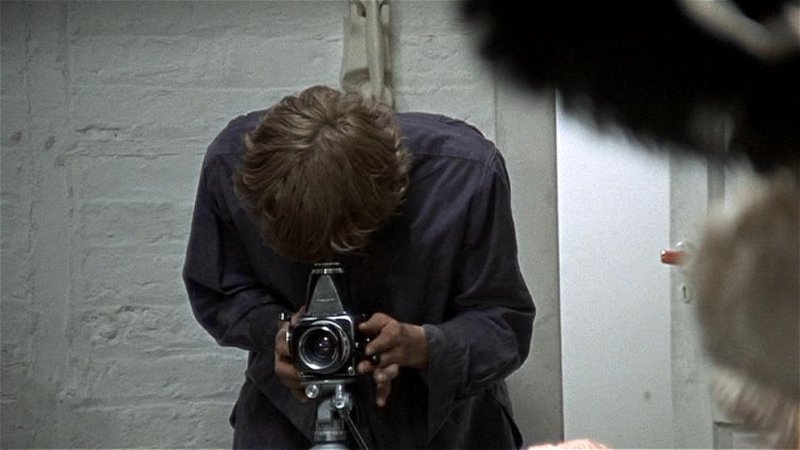 |
 |
 |
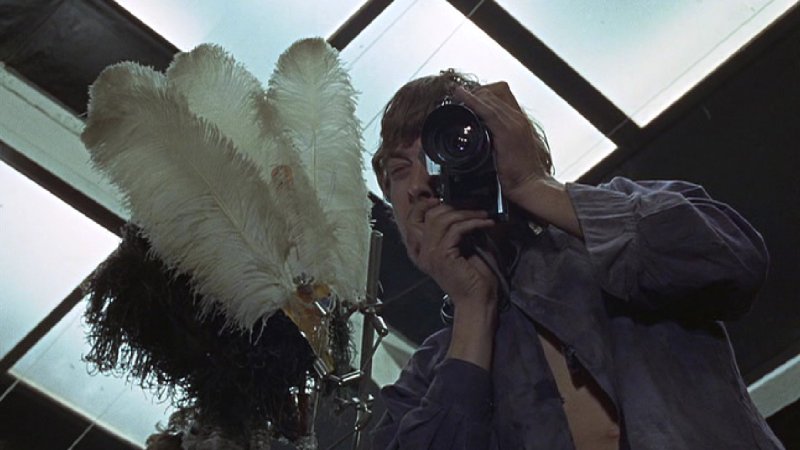 |
 |
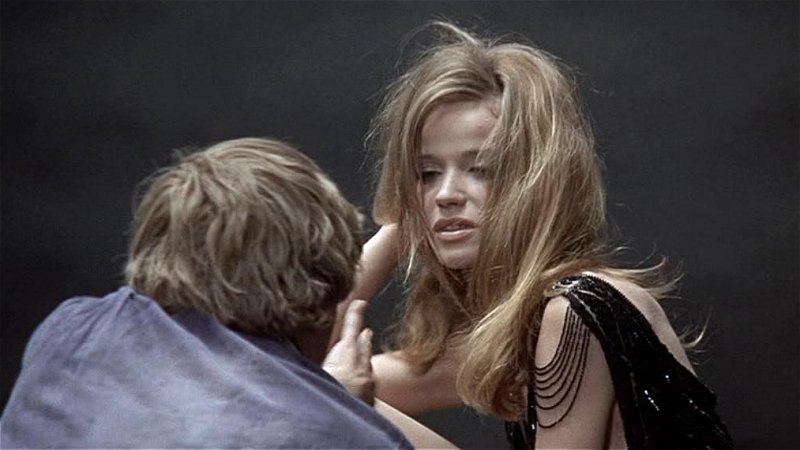 |
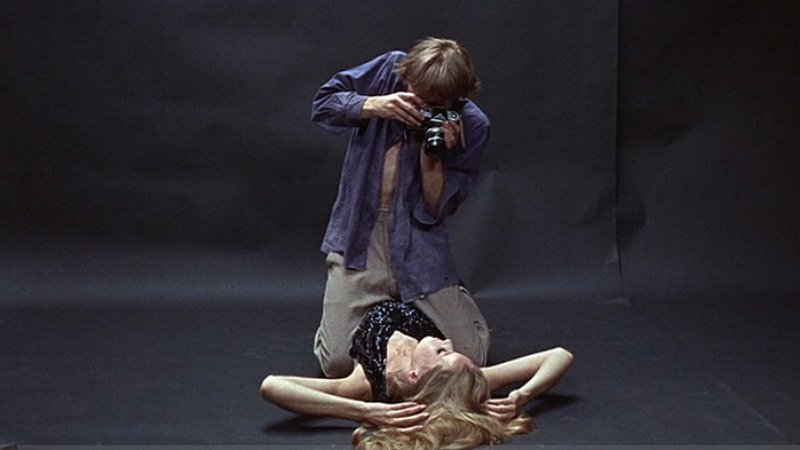 |
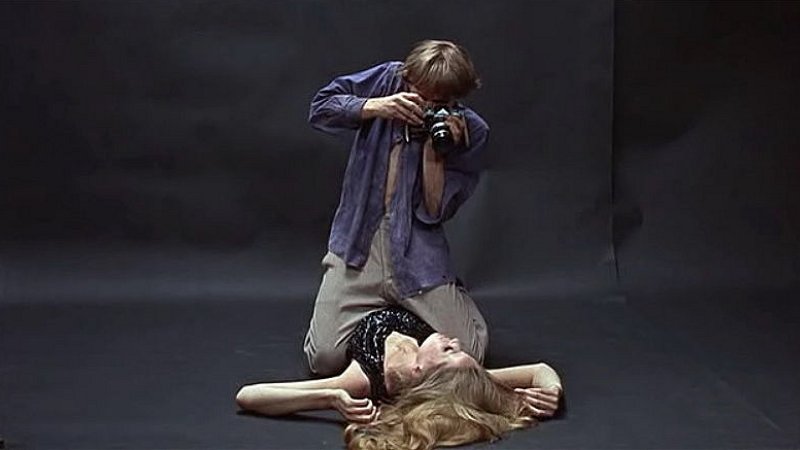 |
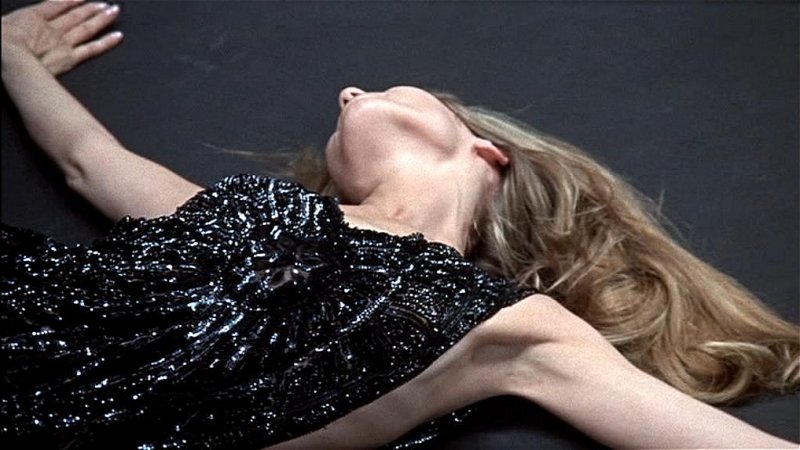 |
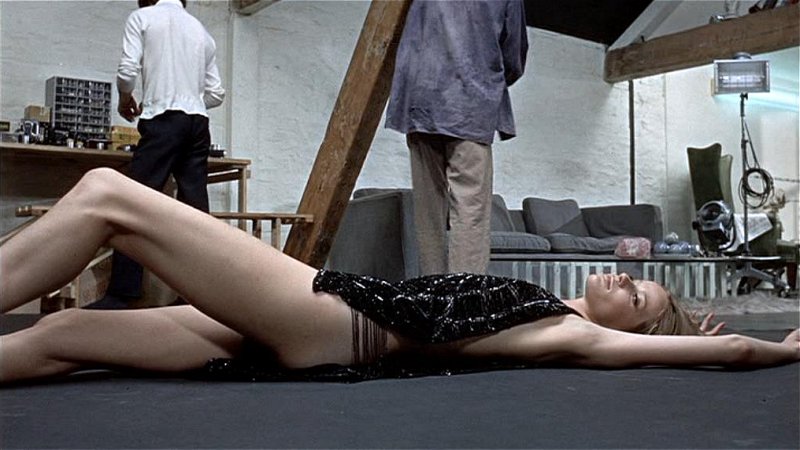 |
|
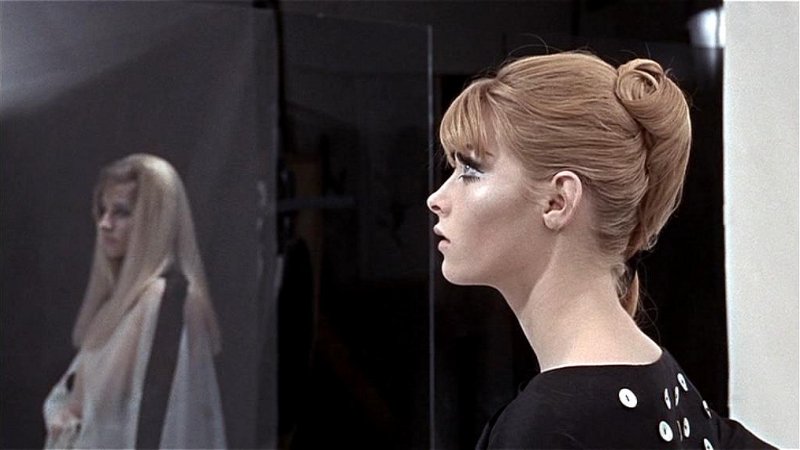
|
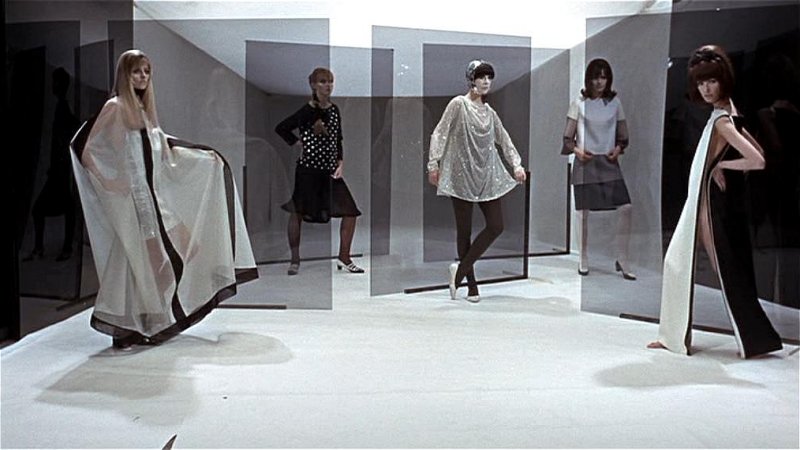 |
|
Jill Kennington - Rosaleen Murray - Peggy Moffitt - Ann Norman - Melanie Hampshire
|
 |
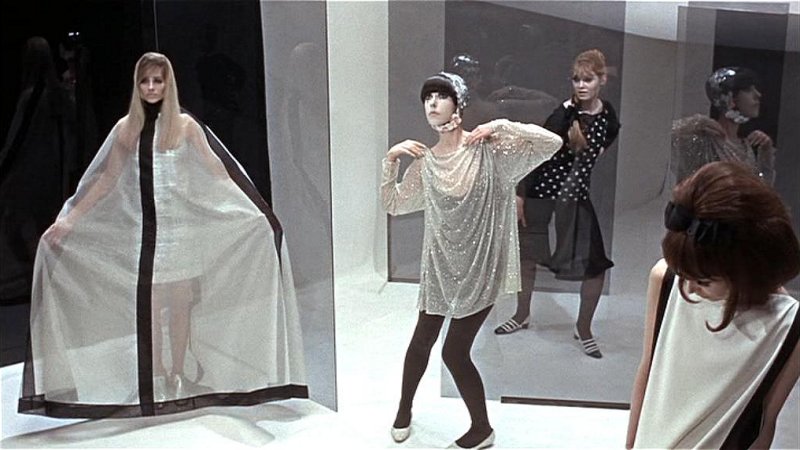 |
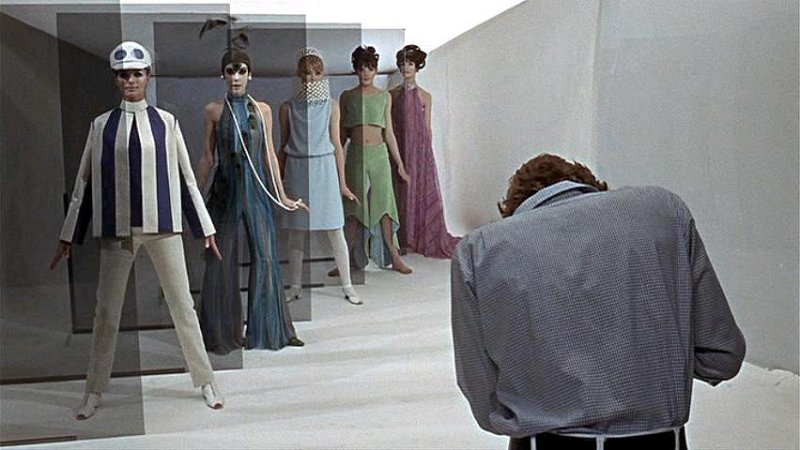 |
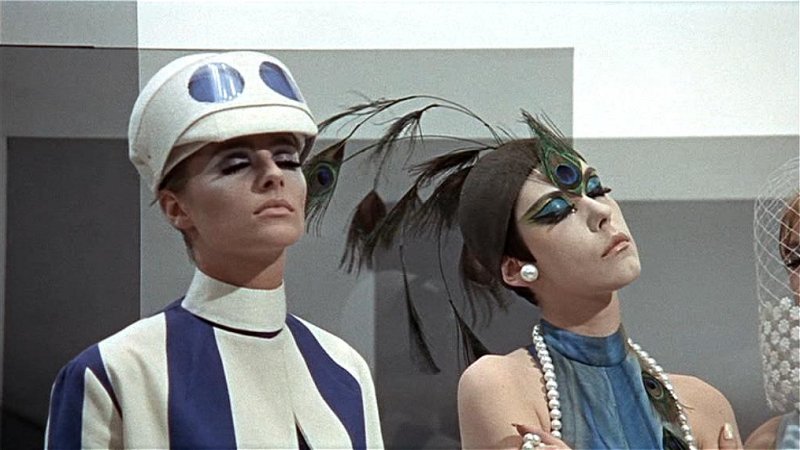 |
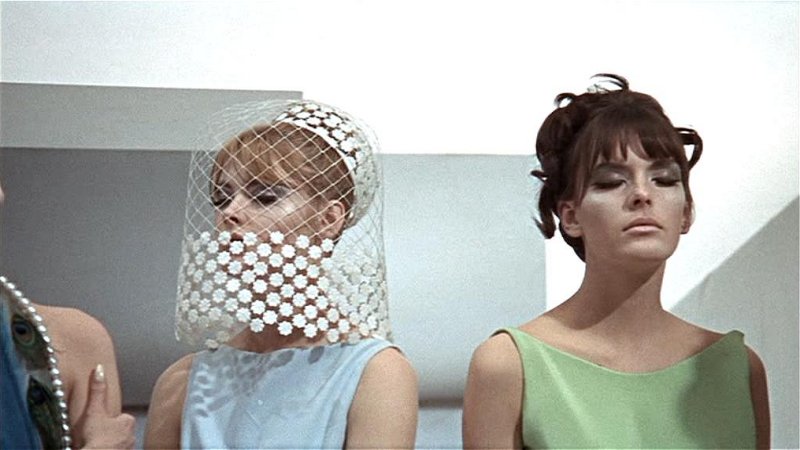 |
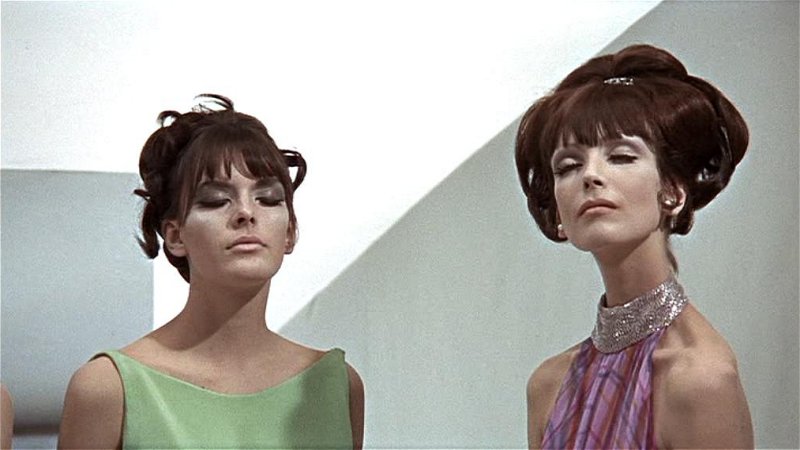 |
|
 |
 |
|
Vanessa Redgrave
|
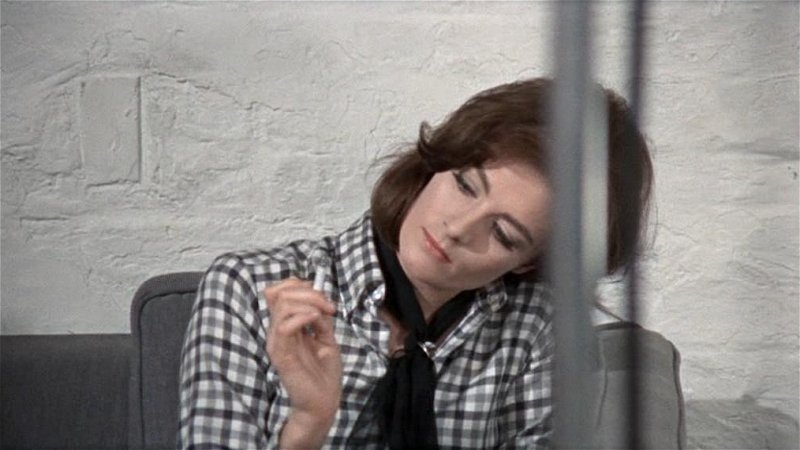 |
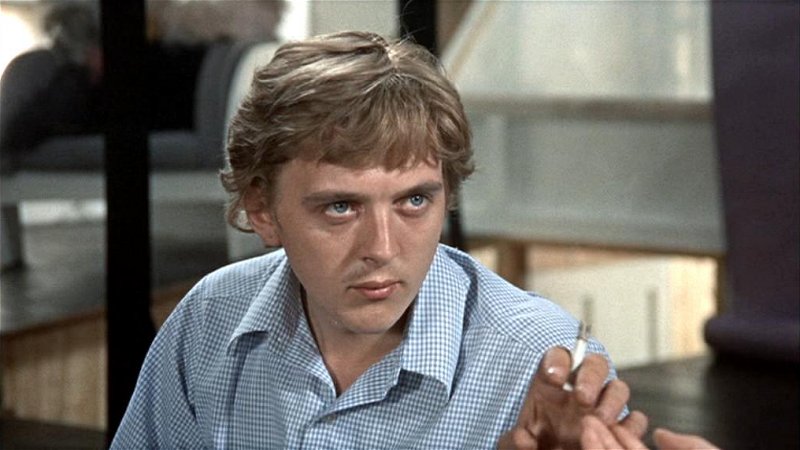 |
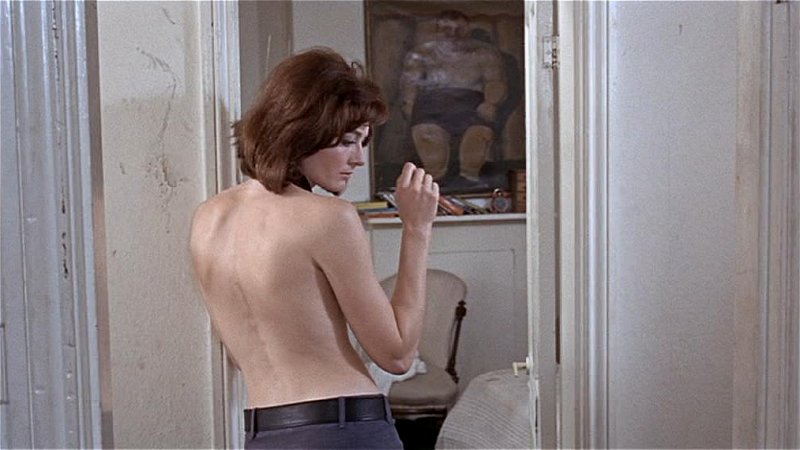 |
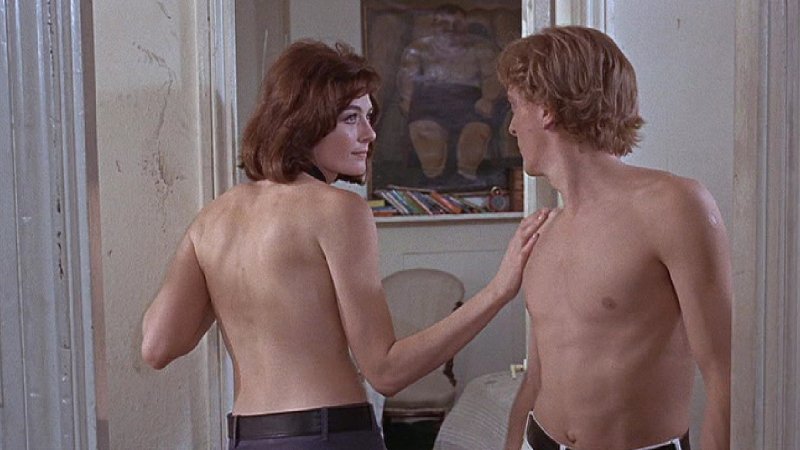 |
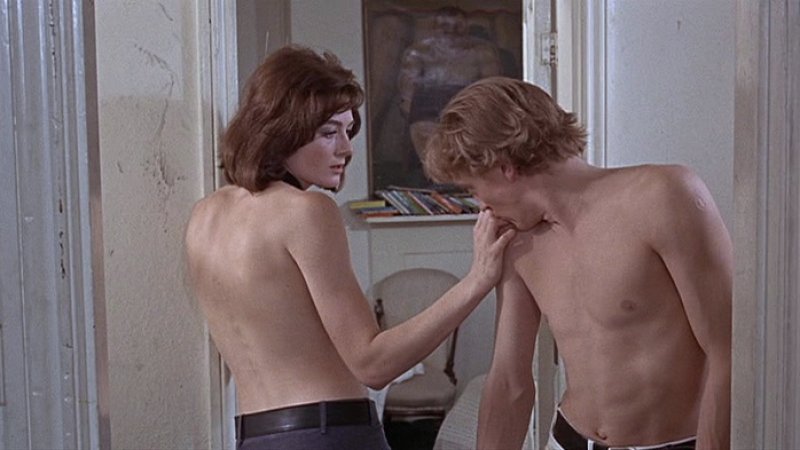 |
 |
|
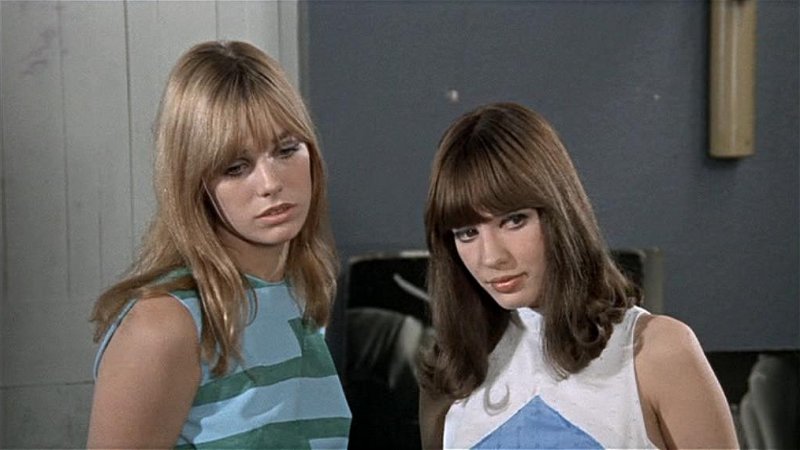 |
|
Jane Birkin - Gillian Hills
|
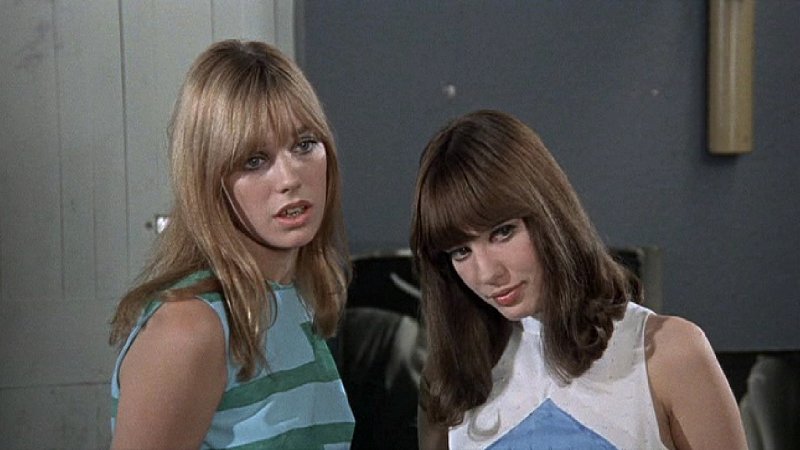 |
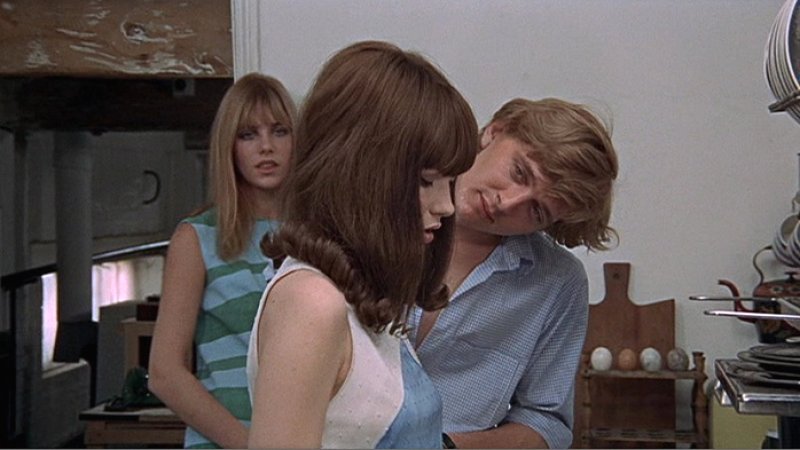 |
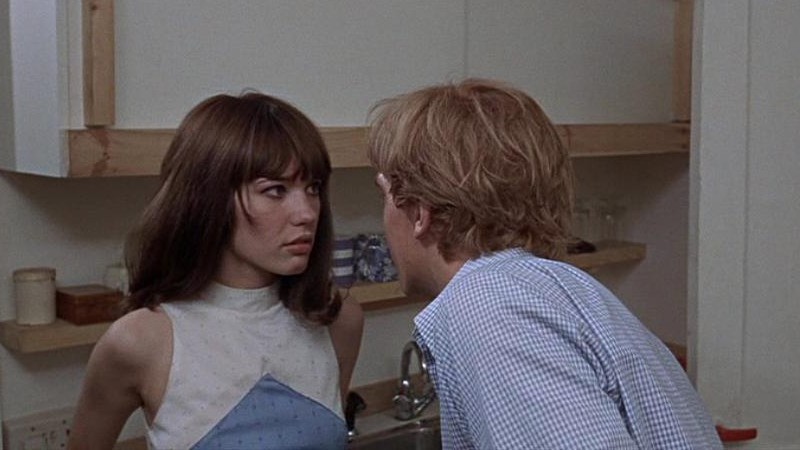 |
 |
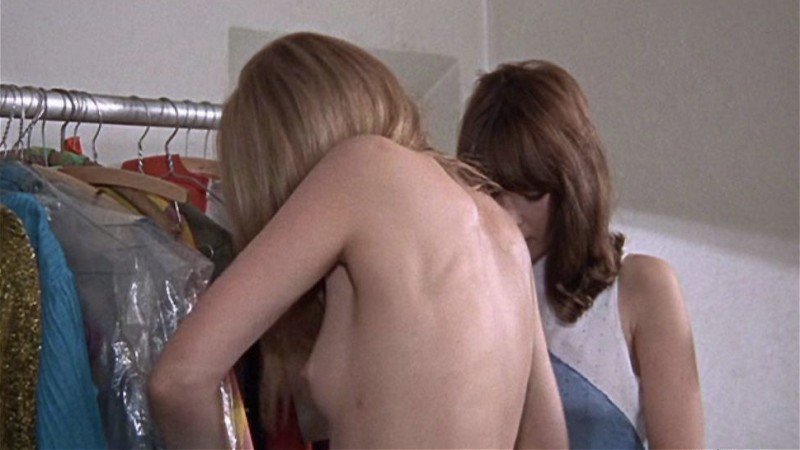 |
 |
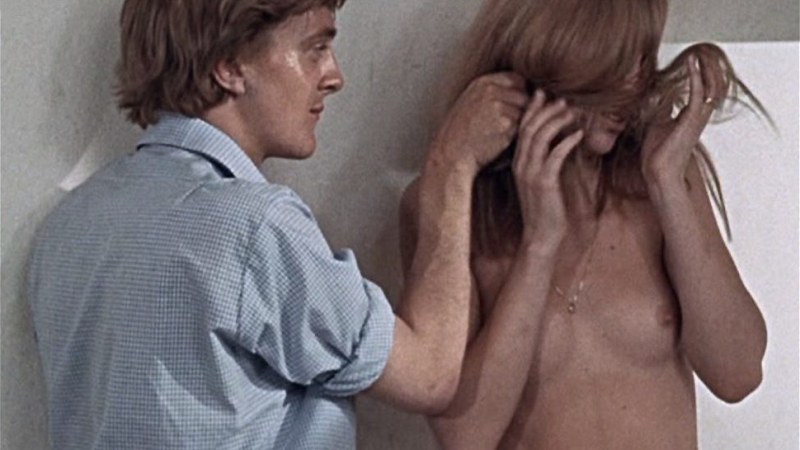 |
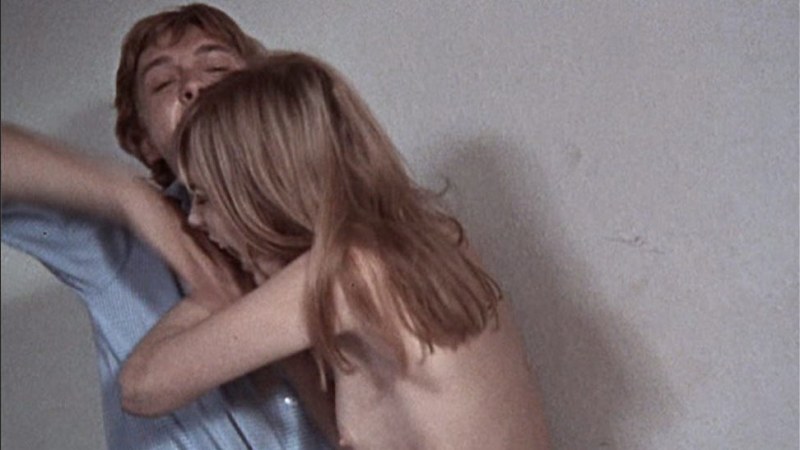 |
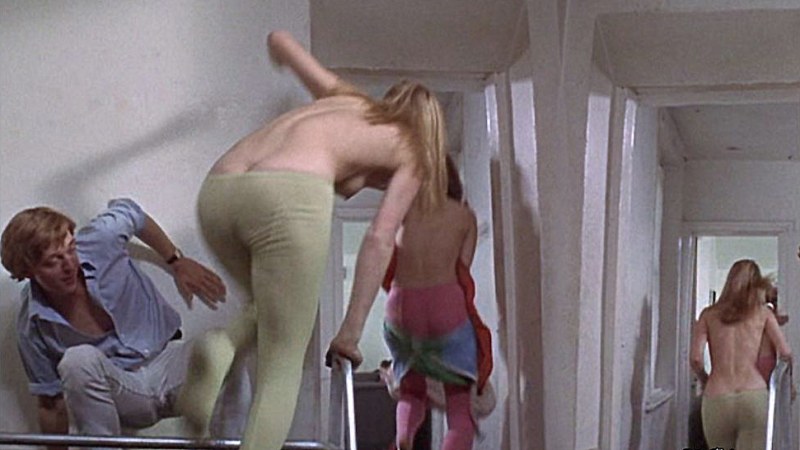 |
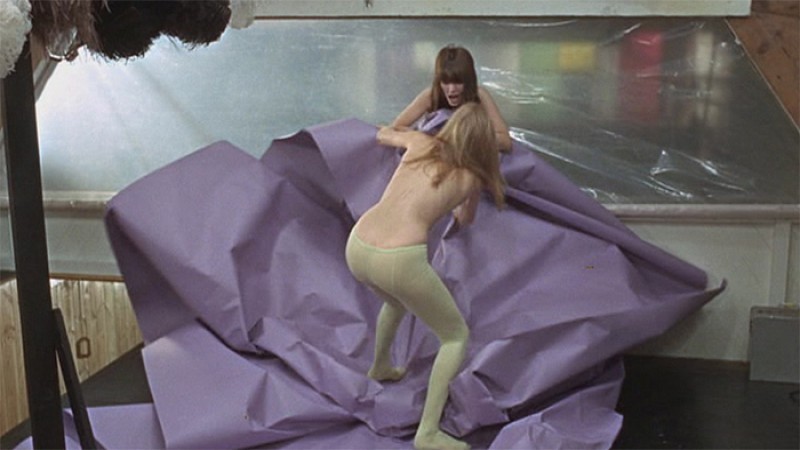 |
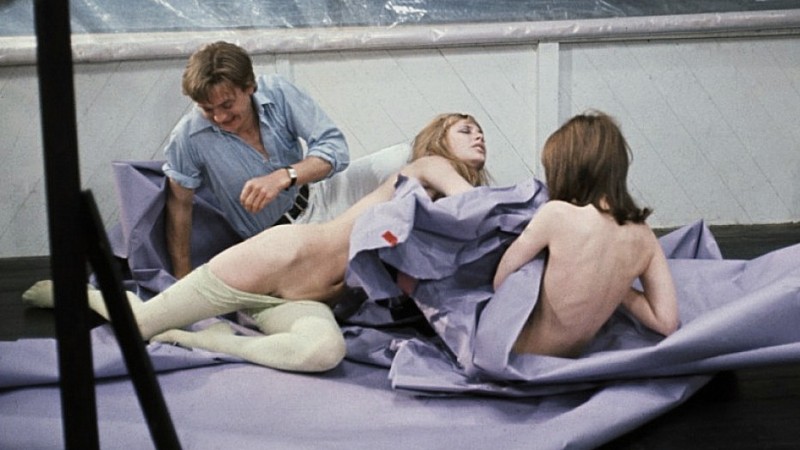 |
 |
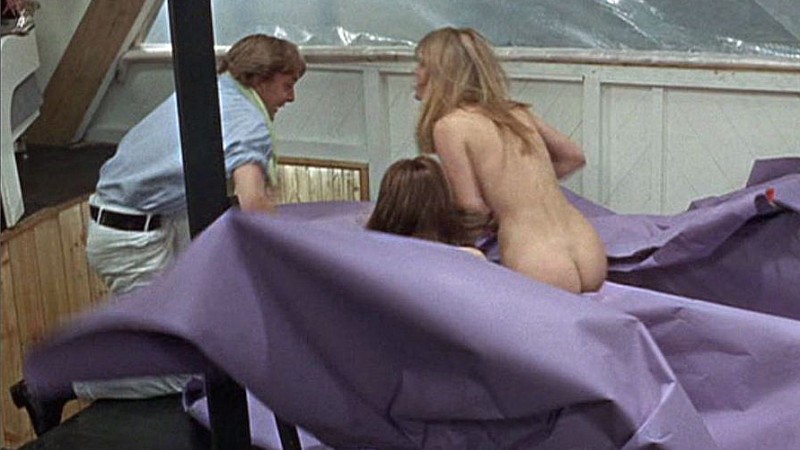 |
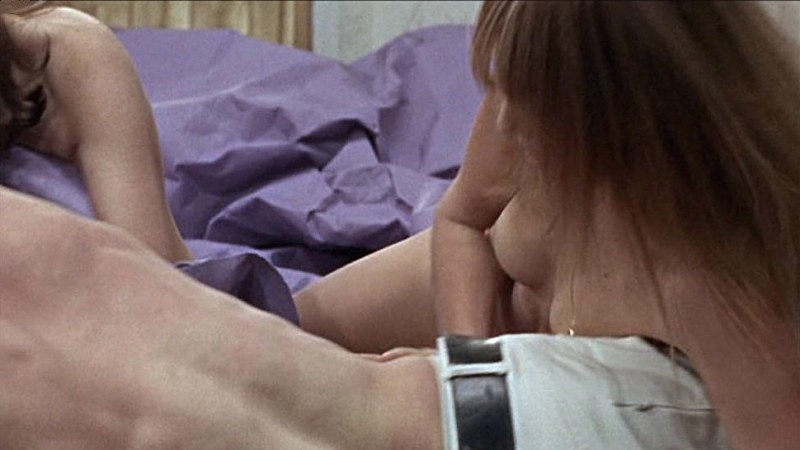 |
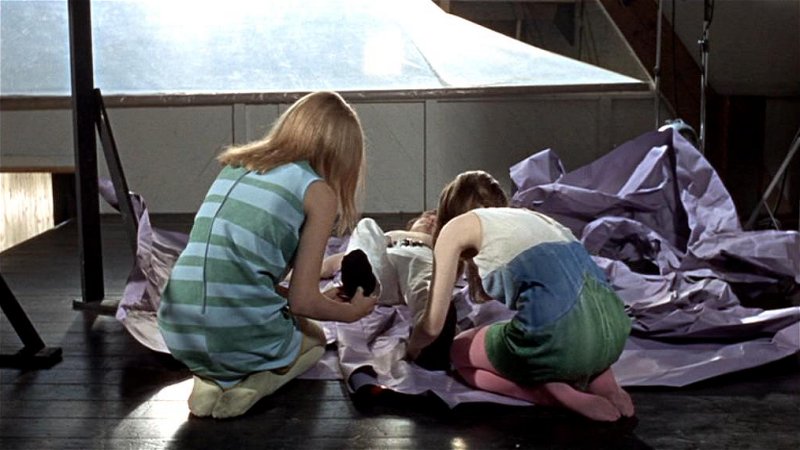 |
|
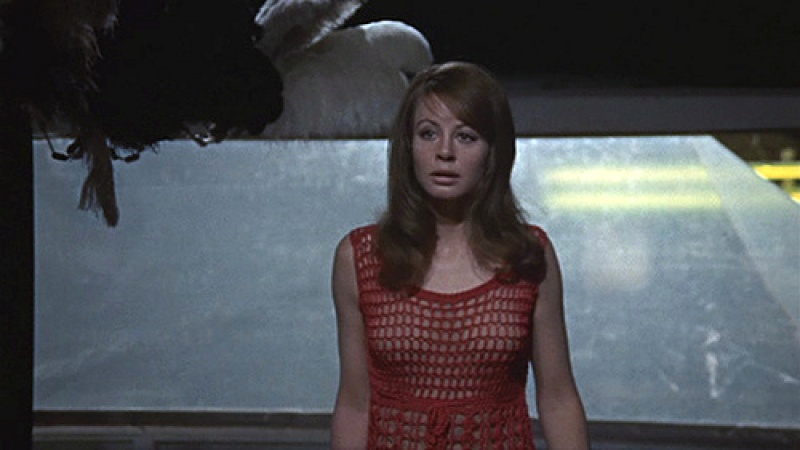 |
|
Sarah Miles
|
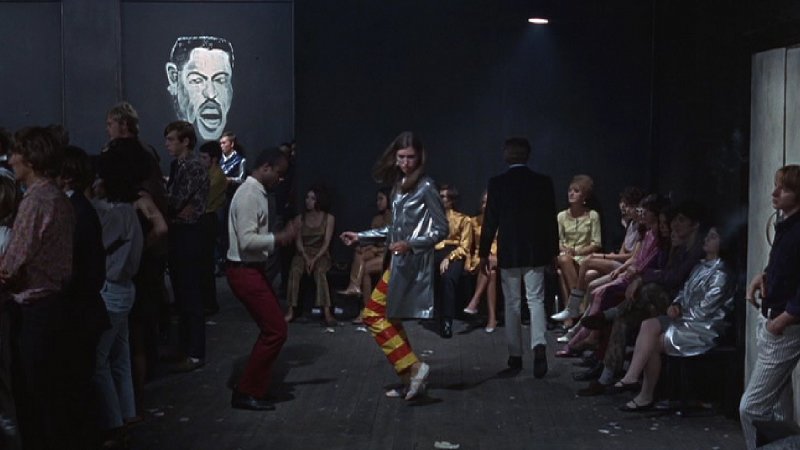 |
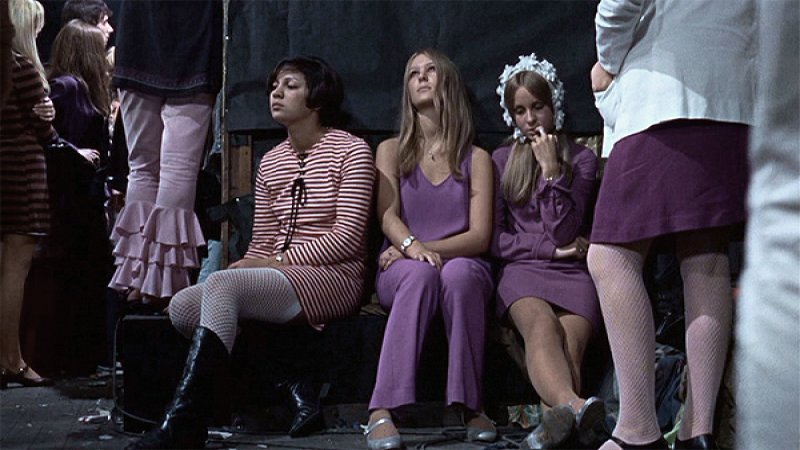 |
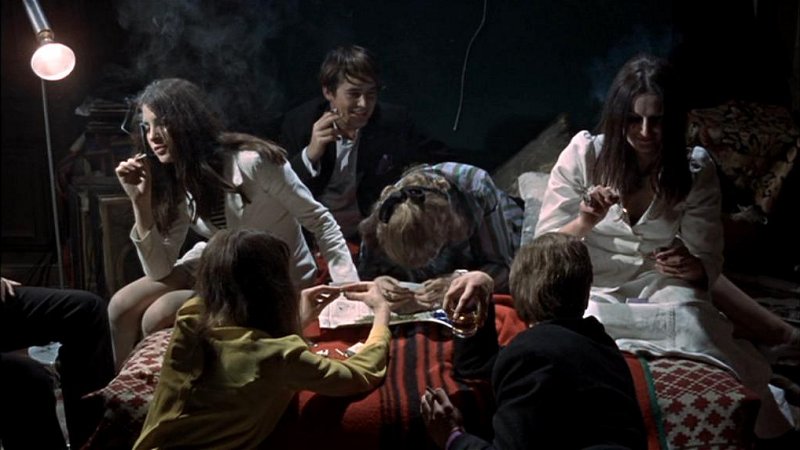 |
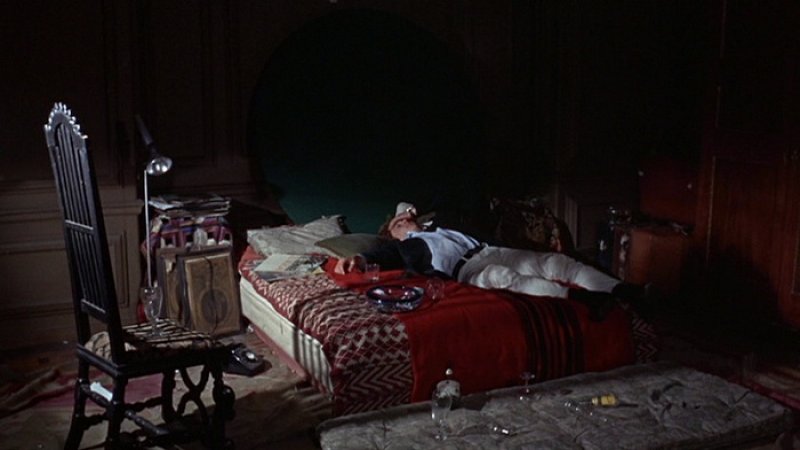 |
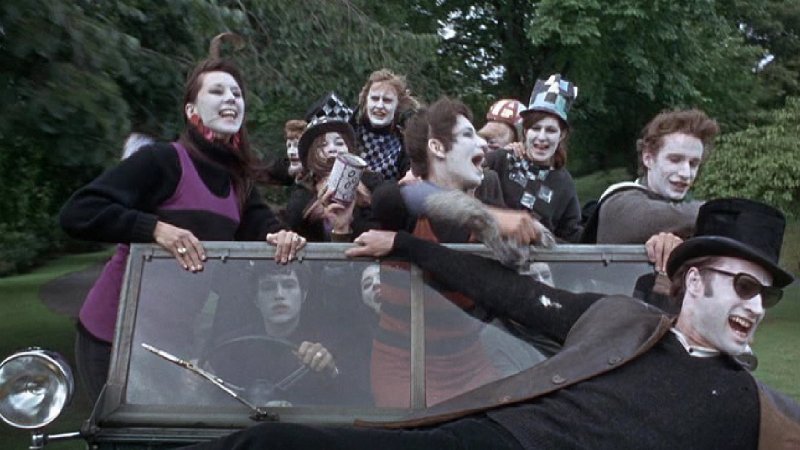 |
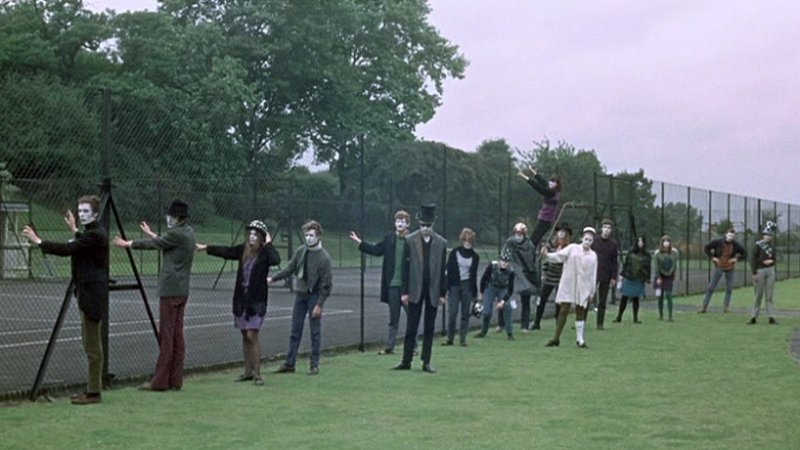 |
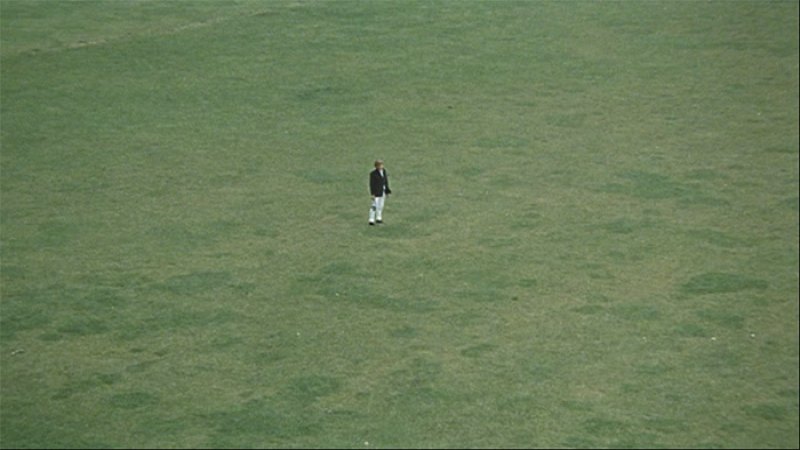 |
 Celebrity appearances: The film contains appearances from various famous people of the day
(the fashion models Verushka and
Peggy Moffitt for example), and some
people who would become famous later and a reference to Bob Dylan .
In a scene near the end, The Yardbirds perform "Stroll On", Jimmy Page and
Jeff Beck play side by side until Beck smashes his guitar ŕ la "The Who" .
Michael Palin of Monty Python's Flying Circus fame can be seen very briefly
in the crowd in this scene , and future media personality Janet Street-Porter can be
seen dancing in stripey trousers .
As Hemmings enters the club where The Yardbirds are playing , a poster on the entry door with
a drawing of a tombstone contains the following epitaph: Here lies Bob Dylan Passed Away Royal
Albert Hall 27 May 1966 R.I.P. (in obvious reference to the use of electric instruments).
Celebrity appearances: The film contains appearances from various famous people of the day
(the fashion models Verushka and
Peggy Moffitt for example), and some
people who would become famous later and a reference to Bob Dylan .
In a scene near the end, The Yardbirds perform "Stroll On", Jimmy Page and
Jeff Beck play side by side until Beck smashes his guitar ŕ la "The Who" .
Michael Palin of Monty Python's Flying Circus fame can be seen very briefly
in the crowd in this scene , and future media personality Janet Street-Porter can be
seen dancing in stripey trousers .
As Hemmings enters the club where The Yardbirds are playing , a poster on the entry door with
a drawing of a tombstone contains the following epitaph: Here lies Bob Dylan Passed Away Royal
Albert Hall 27 May 1966 R.I.P. (in obvious reference to the use of electric instruments).
 Celebrita': Nel film appaiono vari personaggi famosi di quei giorni (le modelle Verushka e
Peggy Moffitt per esempio),
ed alcuni che lo diventeranno in seguito come Jane Birkin , oltre ad un riferimento a Bob Dylan .
In una sequenza vicina alla fine, suonano "The Yardbirds" con Jimmy Page e Jeff Beck
che si esibisce nell'atto di sfasciare la sua chitarra alla maniera del groppo "The Who" .
Michael Palin del gruppo Monty Python č presente fra il pubblico nella stessa scena ,
mentre la giornalista Janet Street-Porter puň essere vista ballare vestita con pantaloni a strisce .
Quando Hemmings entra nel club dove gli Yardbirds si esibiscono , un manifesto sulla
porta d'entrata con un'illustrazione di tomba contiene il seguente epittafio :
Qui giace Bob Dylan 27 maggio 1966 R.I.P. (con riferimento evidente all'uso degli strumenti elettrici).
Celebrita': Nel film appaiono vari personaggi famosi di quei giorni (le modelle Verushka e
Peggy Moffitt per esempio),
ed alcuni che lo diventeranno in seguito come Jane Birkin , oltre ad un riferimento a Bob Dylan .
In una sequenza vicina alla fine, suonano "The Yardbirds" con Jimmy Page e Jeff Beck
che si esibisce nell'atto di sfasciare la sua chitarra alla maniera del groppo "The Who" .
Michael Palin del gruppo Monty Python č presente fra il pubblico nella stessa scena ,
mentre la giornalista Janet Street-Porter puň essere vista ballare vestita con pantaloni a strisce .
Quando Hemmings entra nel club dove gli Yardbirds si esibiscono , un manifesto sulla
porta d'entrata con un'illustrazione di tomba contiene il seguente epittafio :
Qui giace Bob Dylan 27 maggio 1966 R.I.P. (con riferimento evidente all'uso degli strumenti elettrici).
|
|
|
|
Directed by
|
Michelangelo Antonioni
|
|
Written by
|
Michelangelo Antonioni
Julio Cortázar
|
|
Released
|
December 18, 1966
|
| Starring
|
Vanessa Redgrave • Jane
David Hemmings • Thomas
Sarah Miles • Patricia
Gillian Hills • Brunette girl
Jane Birkin • Blonde girl ►
VIDEO
Verushka • Herself ►
VIDEO
Fashion models ►
VIDEO
The Yardbirds ►
VIDEO
|
|
Photography |
Carlo Di Palma
|
|
Music |
Herbie Hancock
|
|
Running time |
111 min. |
|

|
|
|
 MAIN PAGE
MAIN PAGE